Takara E. Truong
BeyondMimic: From Motion Tracking to Versatile Humanoid Control via Guided Diffusion
Aug 13, 2025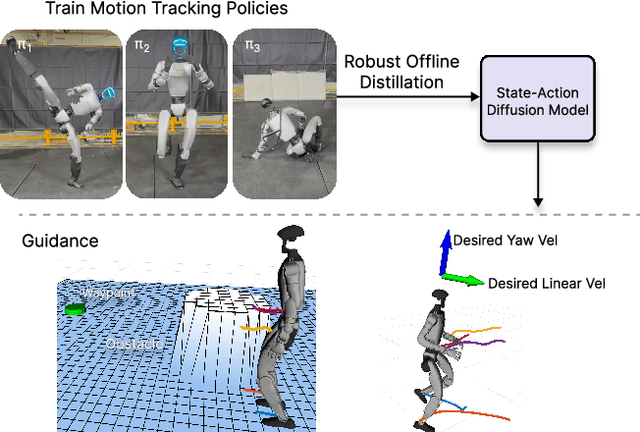
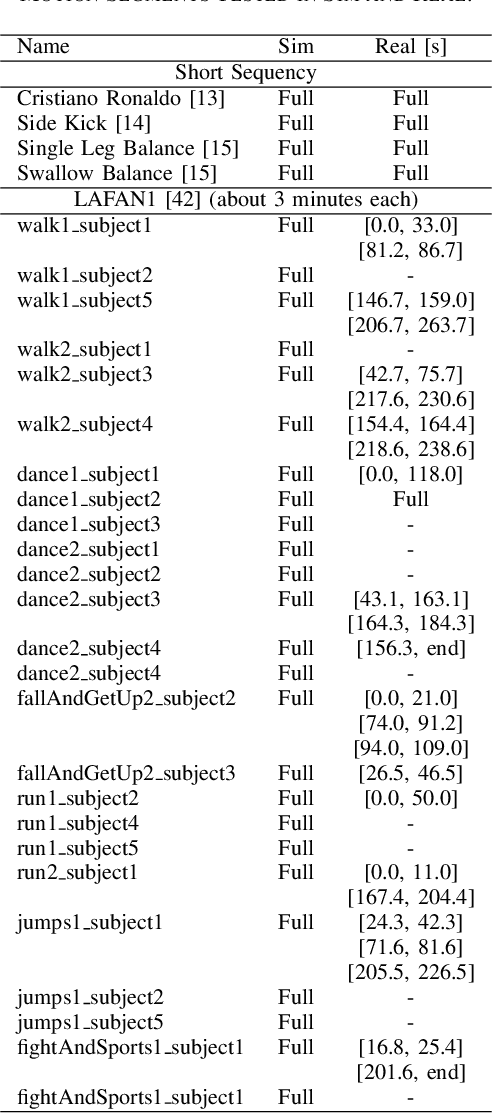


Abstract:Learning skills from human motions offers a promising path toward generalizable policies for versatile humanoid whole-body control, yet two key cornerstones are missing: (1) a high-quality motion tracking framework that faithfully transforms large-scale kinematic references into robust and extremely dynamic motions on real hardware, and (2) a distillation approach that can effectively learn these motion primitives and compose them to solve downstream tasks. We address these gaps with BeyondMimic, a real-world framework to learn from human motions for versatile and naturalistic humanoid control via guided diffusion. Our framework provides a motion tracking pipeline capable of challenging skills such as jumping spins, sprinting, and cartwheels with state-of-the-art motion quality. Moving beyond simply mimicking existing motions, we further introduce a unified diffusion policy that enables zero-shot task-specific control at test time using simple cost functions. Deployed on hardware, BeyondMimic performs diverse tasks at test time, including waypoint navigation, joystick teleoperation, and obstacle avoidance, bridging sim-to-real motion tracking and flexible synthesis of human motion primitives for whole-body control. https://beyondmimic.github.io/.
PDP: Physics-Based Character Animation via Diffusion Policy
Jun 03, 2024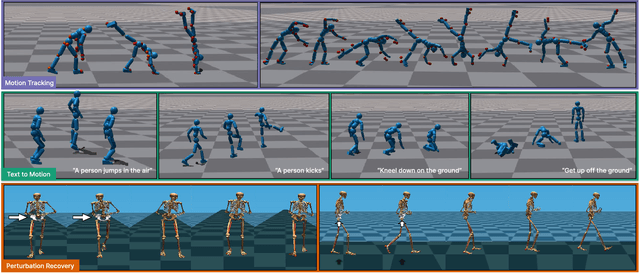
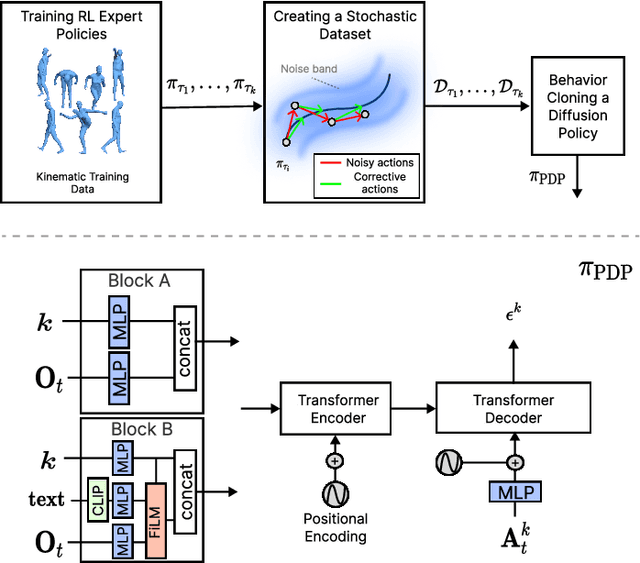
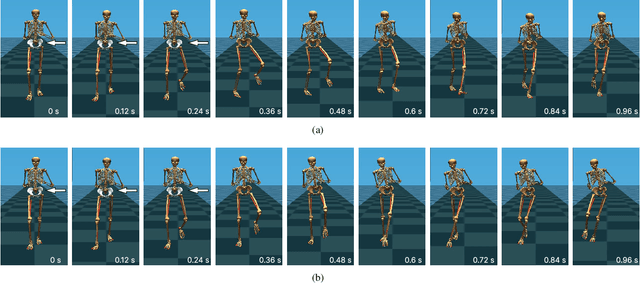

Abstract:Generating diverse and realistic human motion that can physically interact with an environment remains a challenging research area in character animation. Meanwhile, diffusion-based methods, as proposed by the robotics community, have demonstrated the ability to capture highly diverse and multi-modal skills. However, naively training a diffusion policy often results in unstable motions for high-frequency, under-actuated control tasks like bipedal locomotion due to rapidly accumulating compounding errors, pushing the agent away from optimal training trajectories. The key idea lies in using RL policies not just for providing optimal trajectories but for providing corrective actions in sub-optimal states, giving the policy a chance to correct for errors caused by environmental stimulus, model errors, or numerical errors in simulation. Our method, Physics-Based Character Animation via Diffusion Policy (PDP), combines reinforcement learning (RL) and behavior cloning (BC) to create a robust diffusion policy for physics-based character animation. We demonstrate PDP on perturbation recovery, universal motion tracking, and physics-based text-to-motion synthesis.
Impactful Robots: Evaluating Visual and Audio Warnings to Help Users Brace for Impact in Human Robot Interaction
Jul 28, 2022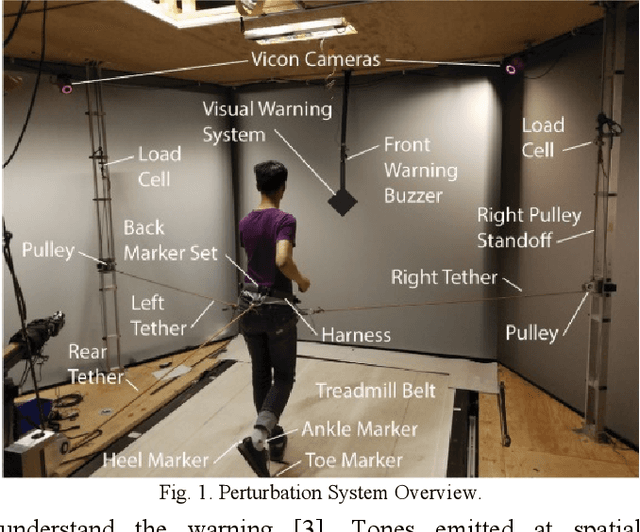

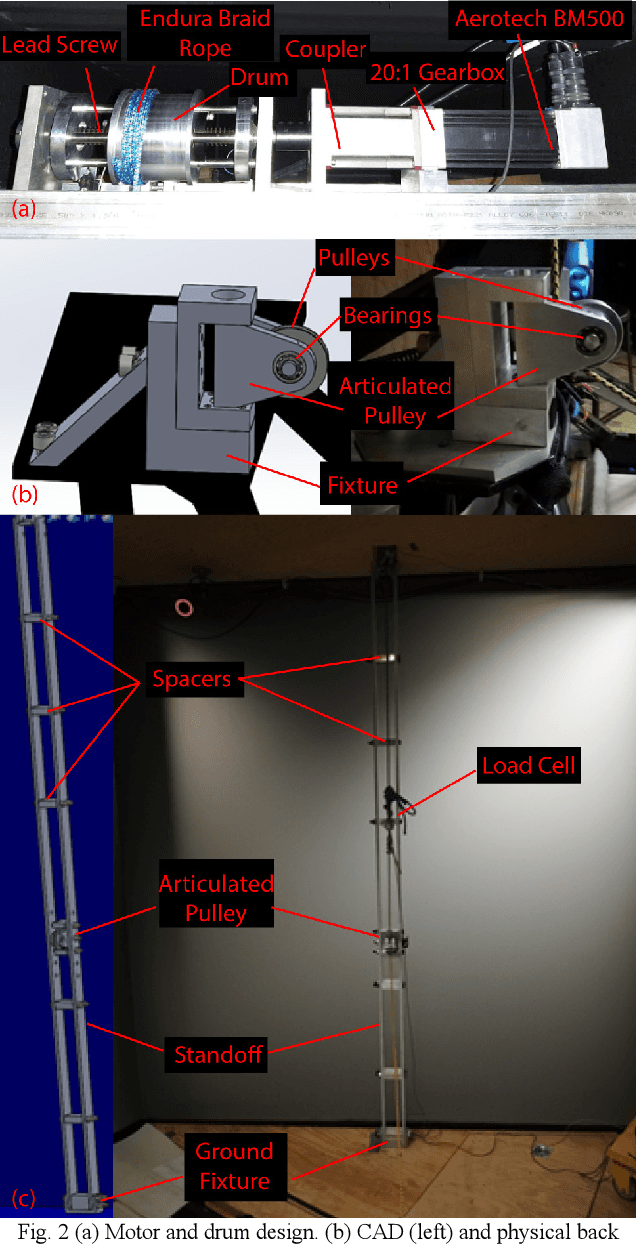

Abstract:Wearable robotic devices have potential to assist and protect their users. Toward design of a Smart Helmet, this article examines the effectiveness of audio and visual warnings to help participants brace for impacts. A user study examines different warnings and impacts applied to users while running. Perturbation forces scaled to user mass are applied from different directions and user displacement is measured to characterize effectiveness of the warning. This is accomplished using the TreadPort Active Wind Tunnel adapted to deliver forward, rearward, right, or left perturbation forces at precise moments during the locomotor cycle. The article presents an overview of the system and demonstrates the ability to precisely deliver consistent warnings and perturbations during gait. User study results highlight effectiveness of visual and audio warnings to help users brace for impact, resulting in guidelines that will inform future human-robot warning systems.
 Add to Chrome
Add to Chrome Add to Firefox
Add to Firefox Add to Edge
Add to Edge